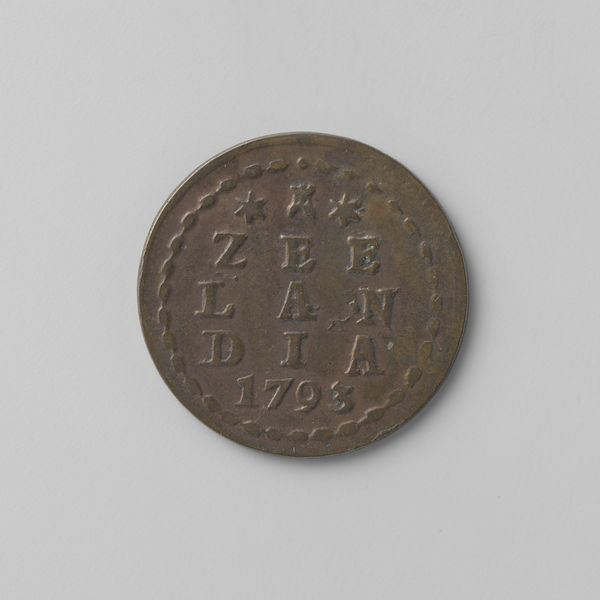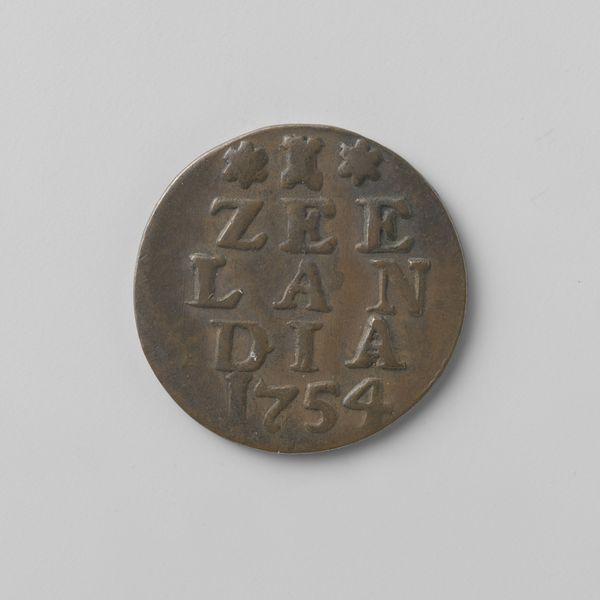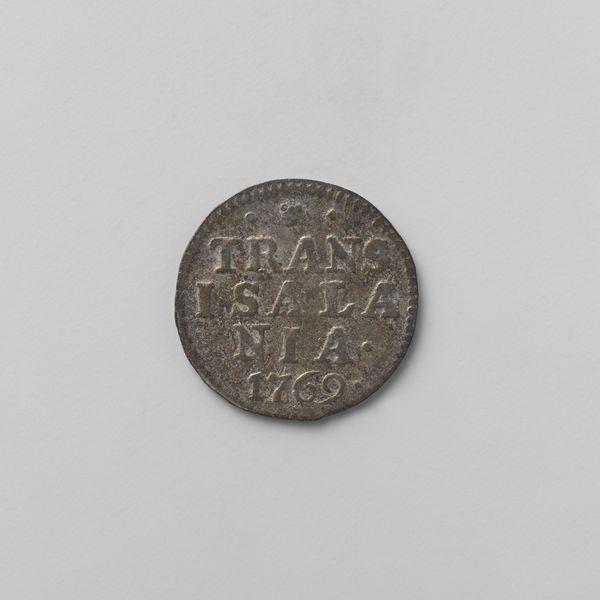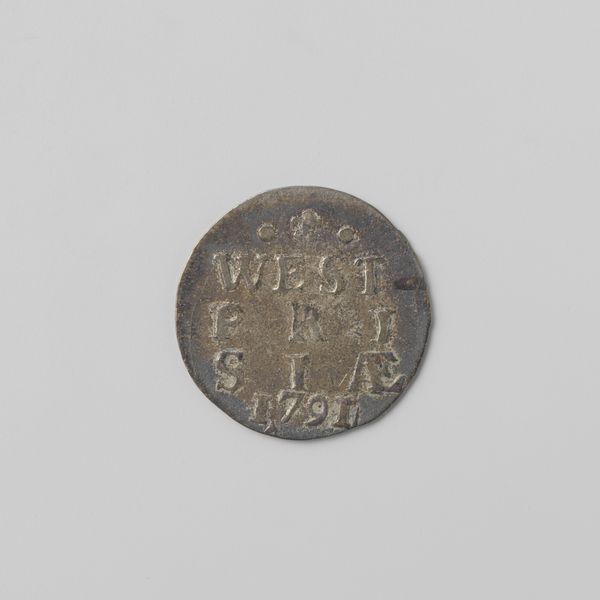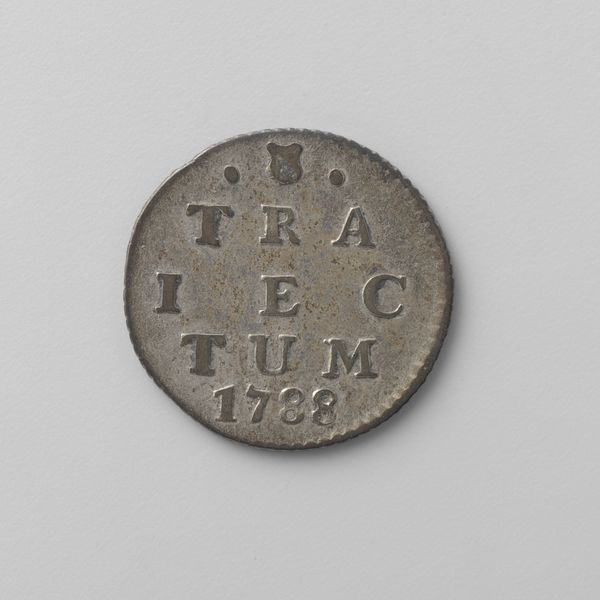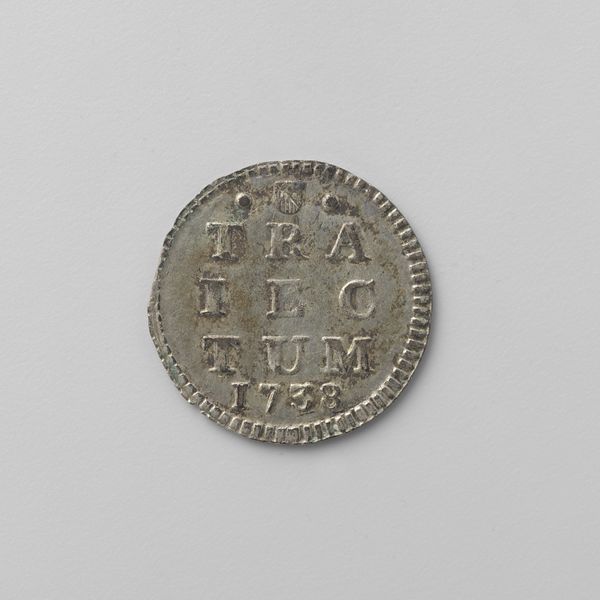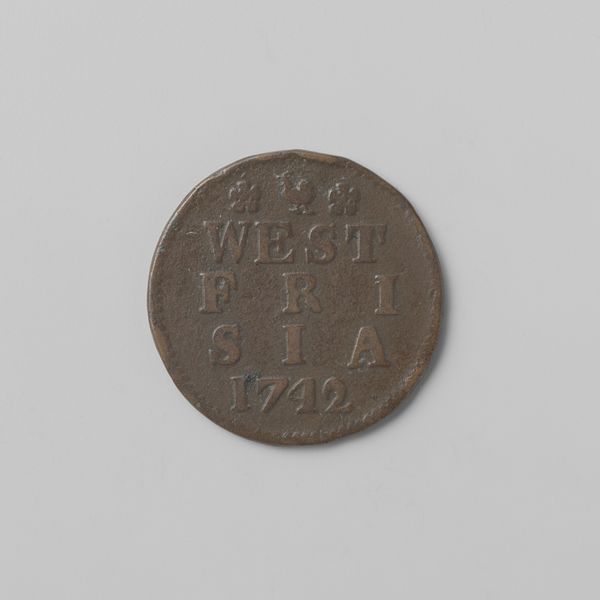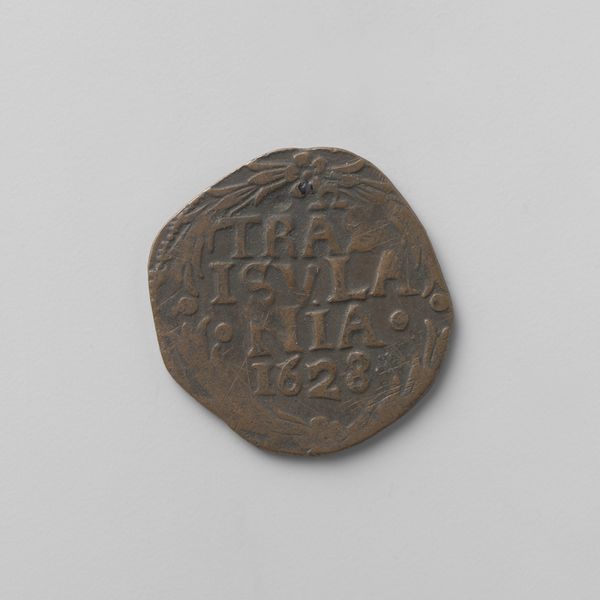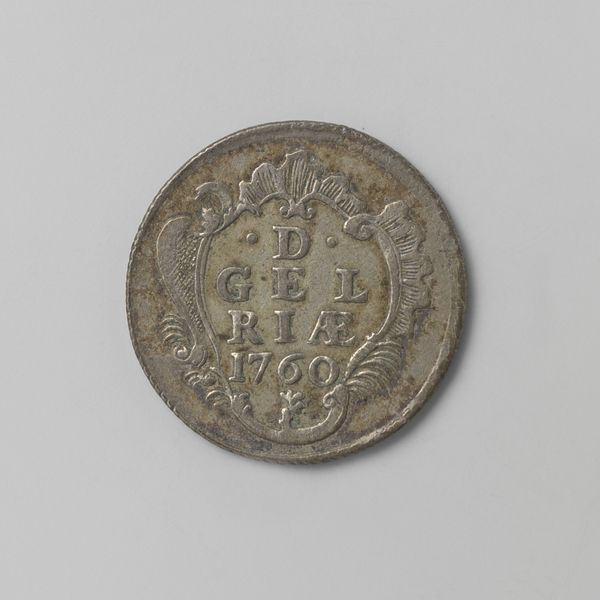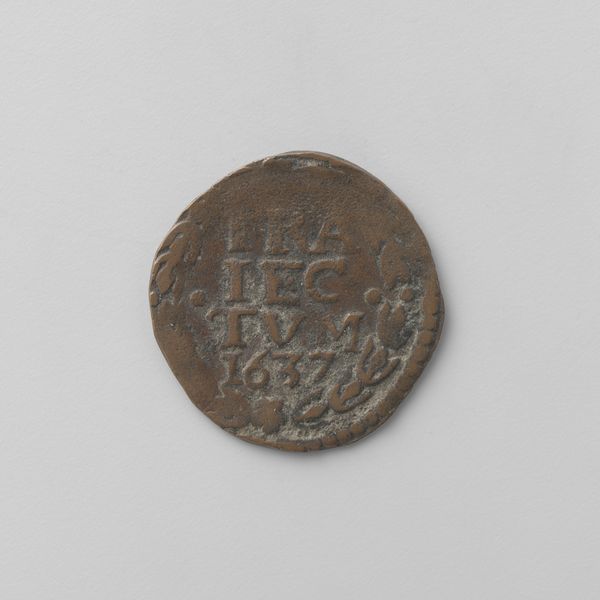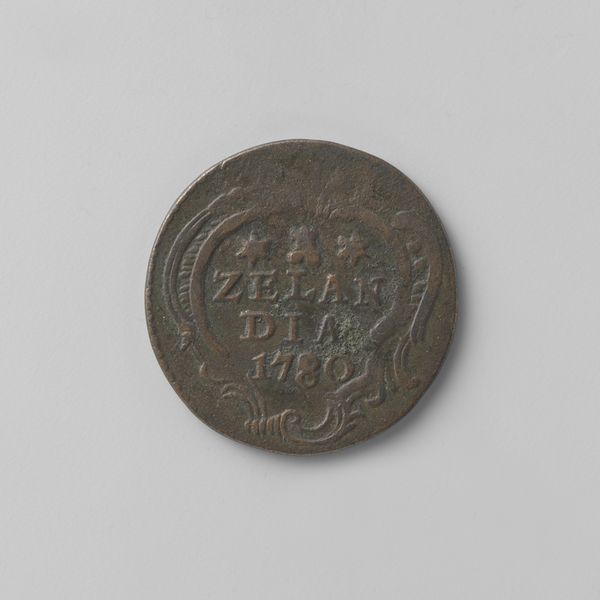
print, metal
# print
#
metal
#
ancient-mediterranean
#
embossed
Dimensions: diameter 2.0 cm, weight 1.55 gr
Copyright: Rijks Museum: Open Domain
This Utrechtse dubbele stuiver was made in 1790 in the province of Utrecht. As an artifact of the 18th century, this coin is a valuable window into the economic and social structures of the time. A double 'stuiver' coin like this would have been everyday currency for ordinary people in the Netherlands. The coin bears witness to the intricate relationship between local governance and economic policy. It demonstrates the power of provincial authorities to mint their own currency, a practice that reflects the decentralized nature of the Dutch Republic at the time. The inscription "TRAIECTUM" is the Latin name for Utrecht, referencing its historical importance. Historians often use numismatic collections to understand past economies and political systems. Examining sources like period documents and trade records, we can understand the economic conditions that shaped artistic and cultural production.
Comments
No comments
Be the first to comment and join the conversation on the ultimate creative platform.
